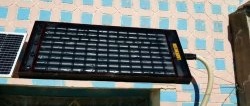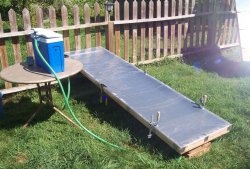Solar water heater (collector) - an indispensable assistant in the household. A collector of the required size and design can provide hot water to a family of several people, while saving hundreds - thousands of rubles, which are spent on electricity and other types of energy resources.
If your dacha does not yet have electricity and gas, and heating water is a certain difficulty, I suggest making a solar water heater for showering and washing dishes from materials that can often be found in a landfill.
First, you need to find the faulty refrigerator, namely, its coil, which is attached to the back wall, is damaged.
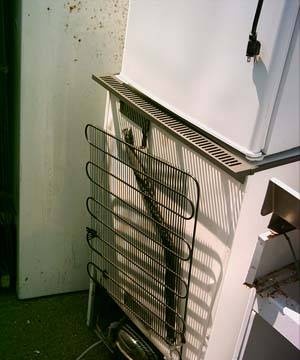
After the coil is dismantled, it must be washed with a stream of water to get rid of the old freon.

We stock up on slats that we will need in the future to make the frame.
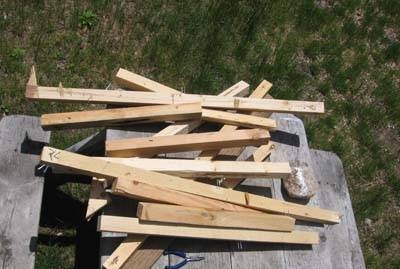
I found an old rubber mat, which is often placed under the door.
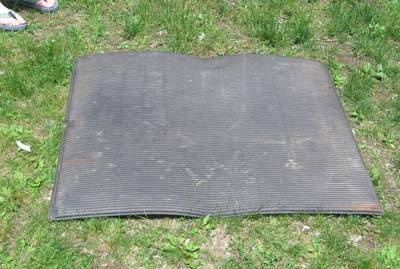
Glass is also not necessary to buy. It can be dismantled from an old window, which is usually thrown into the trash, when replaced with plastic windows.
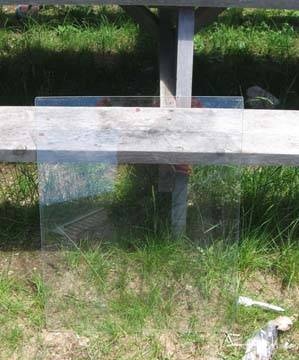
Since our rubber mat turned out to be too big, it was decided to cut it to the size of the future frame.
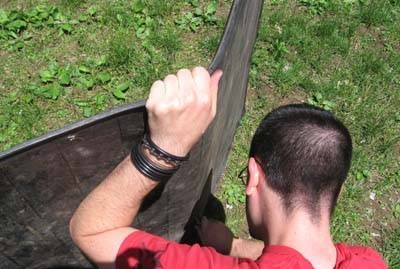
We knock down a frame from the slats so that the coil fits freely between the slats.
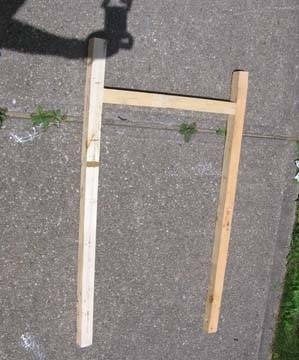
We try on the coil and rubber mat to the frame. We mark the place of fastening of the bottom rail of the frame and the places of cuts for the exit of the tubes.
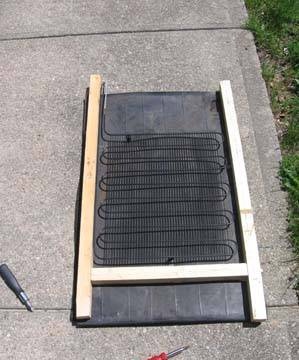
We install the bottom rail of the frame, spread foil between the rubber mat and the frame.

On the back side of the frame, we stuff slats to add rigidity to the structure.
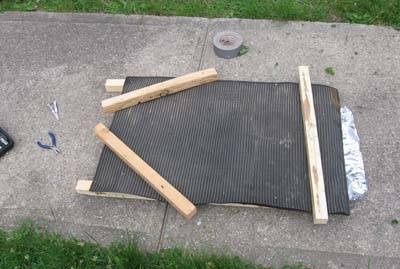
We carefully tape all the gaps between the frame and the foil with tape. This is necessary to prevent cooler outside air from entering the collector.


To supply water to the coil, a PVC pipe was purchased.
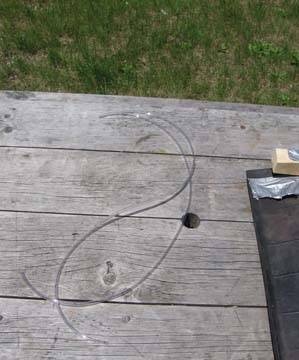
Sealing of the connections of the tubes and the coil was ensured with tape.
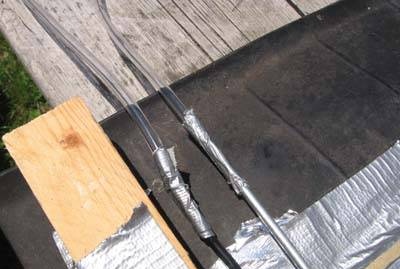
To secure the coil, clamps were used that were removed from the refrigerator. Fastening the clamps was also secured with tape. But for reliability, I recommend securing it with screws.
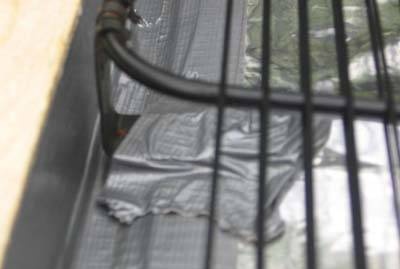
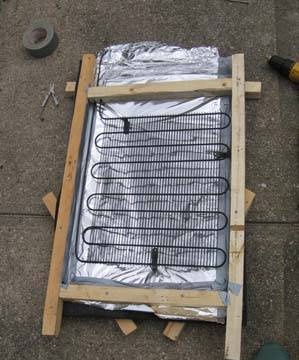
We cover our structure with glass and tape it around the perimeter.
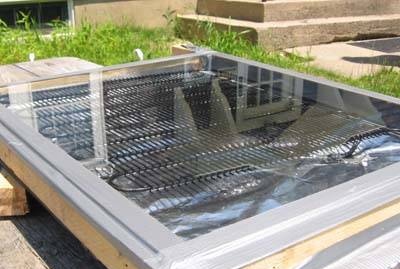
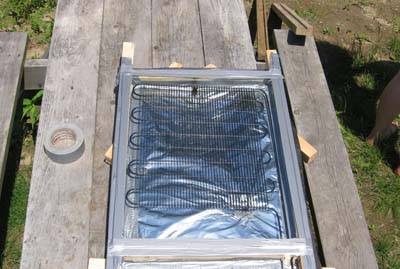
The homemade solar collector is ready. For best heating, the sun's rays must fall on the surface of the collector at a right angle. Therefore, the fastening of the supporting elements of the structure completes the work.

To prevent the glass from moving from the heat, you need to screw in a couple of screws at the bottom that will serve as stops.
Now all that remains is to attach the hot water storage tank.
Circulation occurs only due to natural convection. When heated, the water in the collector expands, becomes less dense, rises up the collector and enters the upper part of the storage tank through a pipe.As a result, cooler water at the bottom of the tank is displaced and flows through another pipe to the bottom of the collector. This water in turn is heated and rises into the tank.
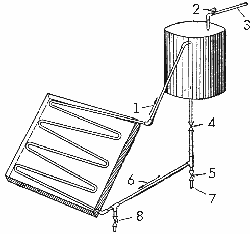
1 - hot water; 2 - pressure relief valve; 3 - hot water drain; 4 - shut-off valve; 5 - make-up valve; 6 - cold water; 7 - cold water supply; 8 - drain valve.
As long as the sun shines, the water will constantly circulate along this circuit, becoming increasingly warmer. Due to the fact that the tank is raised above the collector, the effect of turning over the circulation as a result of night cooling of the coolant in the collector is negated, since cold water simply accumulates at the lowest point of the system (at the bottom of the collector), while warm water remains in the tank.
Such a simple design of a solar collector is capable of heating water on a sunny day, up to 70 degrees.


